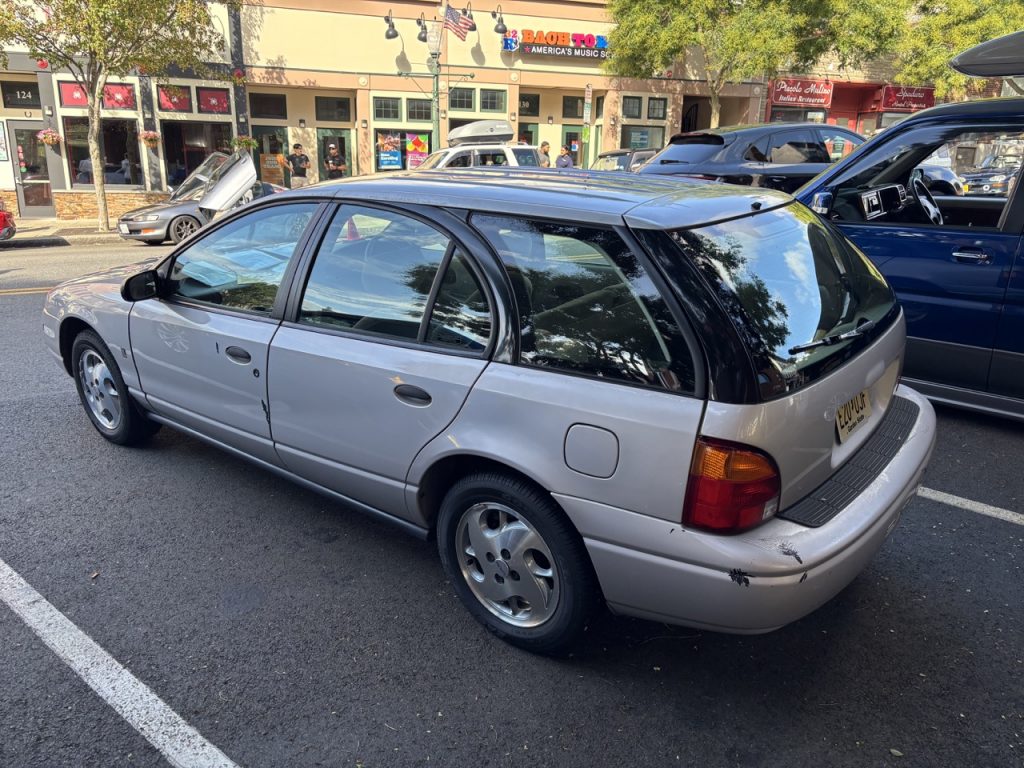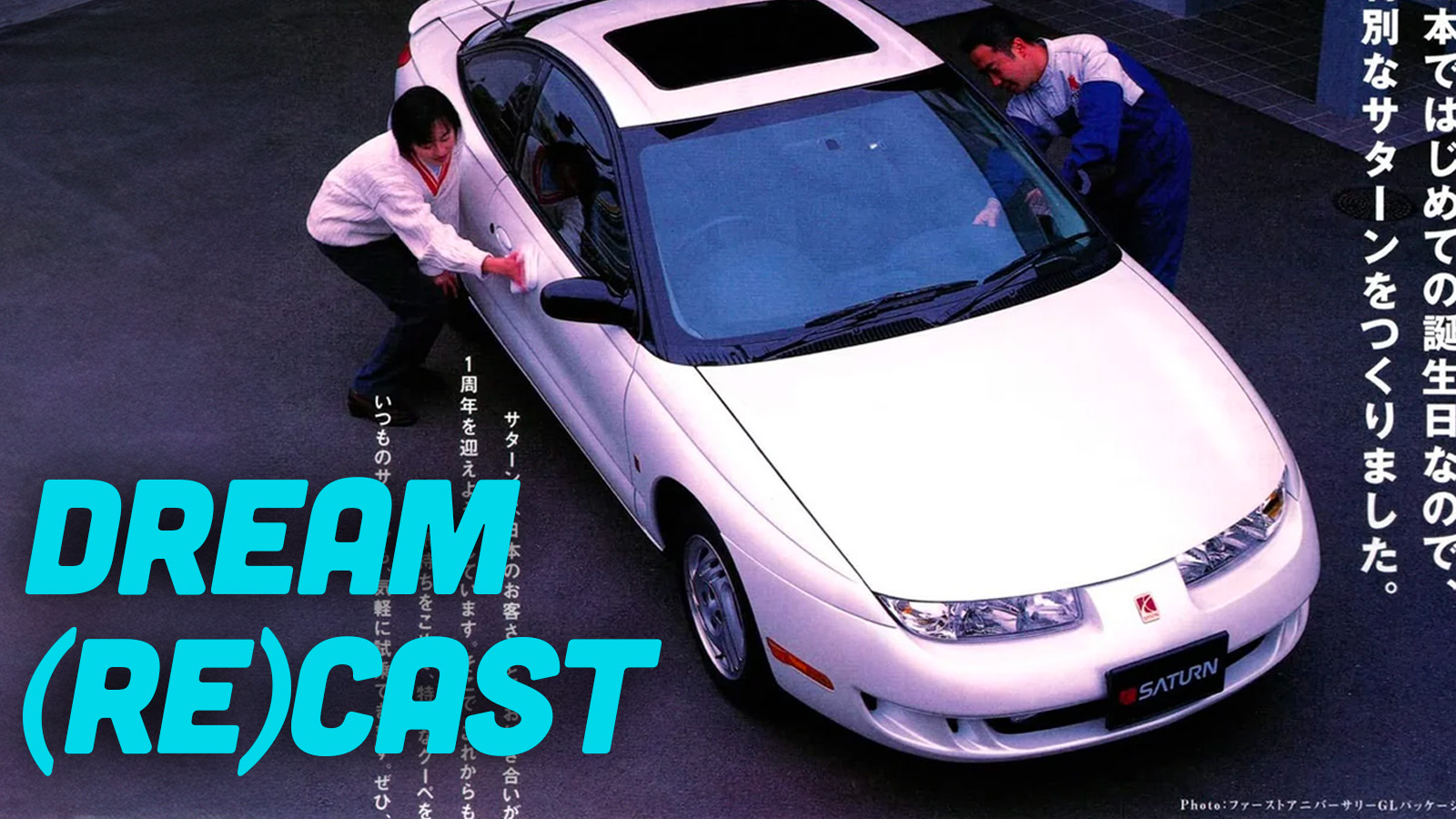There’s been a lot of discussion lately about opening up the Japanese market to cars from American automakers, which is something that hasn’t been extensively tried in decades. Some of this probably comes down to the reality that American cars tend to be too large to be comfortably driven in Japan. Some of it might come down to taste, as General Motors learned when it tried to launch the Saturn brand in Japan.
I was a judge at a JDM car show this weekend in Mamaroneck, New York, and one of the first cars that caught my eye was a Saturn SW2 wagon. Was the owner parked in the wrong place? Not at all. The Saturn had a wheel on the right side of the car, like a Japanese market car, and a bunch of Japanese brochures for the Saturn brand.
There was a super clean modified Japanese SC2 that popped up on Twitter during the pandemic, so I was vaguely aware that some Saturns did end up abroad. What I didn’t realize was how poorly those cars fared abroad and, when that didn’t work, how GM tried to recoup the money it spent on tooling by pawning off the cars on a special subset of Americans.
Exporting The ‘Import Fighter’

Any history of Saturn requires the author to mention that GM was convinced it needed a brand to fight the popular imports at the low end of the market. Specifically, GM wanted a fresh start that would allow it to compete with Honda, Nissan, Toyota, and Mitsubishi. While the company had had some luck by teaming up with Toyota to build an Americanized Corolla, that was deemed insufficient.
Saturn was thus born as an affordable brand with dent-resistant plastic doors, lots of character, and a haggle-free dealership approach. The company immediately found a huge following, pumping out cars from its Spring Hill, Tennessee factory. Freed from the baggage of GM, people embraced the idea of Saturn as much as the actual car, which was a completely fine wagon, sedan, or coupe originally built on a single platform.
GM screwed it up, of course, but not before the brand was feeling itself so much that it tried to export its first models to Japan, as Consumer Guide writes:
Per Saturn president Skip LaFauve, it was time to “…take on the imports in their own territory.”
Moving the metal—in Saturn’s case it would be plastic—in Japan had proven difficult for most American car companies. The Japanese market was difficult to navigate for a number of legal, logistical, and administrative reasons. Plus, Japanese shoppers were famously wary of American-made vehicles.
For some reason, the marketers thought that the idea of Tennessee might be exotic to Japanese consumers and put together this bewildering ad that features a cover of “Close To You” playing over a young man, a young woman, and an older man visiting the factory and taking in the best that Central Tennessee has to offer. Even the brochures had “From Spring Hill, Tennessee” listed as a kind of exotic tagline.
There’s also a bizarro inverted version of this that features Saturn bragging about selling cars in Japan, using Jim Gaffigan as the star:
I guess the message here was supposed to be: American cars are now so good, even the Japanese market is buying them. Except that wasn’t quite true.
The cars were competitively priced, with the wagon above starting at 1,755,000 yen, which was slightly less than a Honda Orthia (basically, a Civic wagon) at the time. The minor savings weren’t enough to sway buyers, and after four years and only about 4,300 reported sales, the company gave up on trying to break into the country.
That would be the end of the story, except GM decided it needed to recoup its investment somehow.
Maybe Americans Wanted A Wagon With The Wheel On The Wrong Side Of The Car?

What happened next is possibly another triumph of the famously powerful and infamously shortsighted GM accounting department. Rather than merely eat the investment, Saturn tried to utilize the tooling it had lying around to sell some wagons to Americans and, specifically, to rural mail carriers, as Autoweek points out:
Sales targeting the U.S. Postal Service came to a mild kind of rescue, as Saturn sought to compete in the very narrow niche of providing right-hand drive vehicles to rural route carriers — a demographic catered to almost solely by Subaru and Jeep in the 1990s.
Sales to mail carriers did not salvage the investment that GM made to sell Saturns in Japan, in case you’re wondering, but it did shed some light on a little known fact in motor vehicle legislation: Right-hand drive vehicles were not “banned” from sales in the U.S. They were legal, as long as the cars themselves conformed to DOT and NHTSA requirements. Furthermore, it was not a requirement that they had to be operated by a government agency of some sort. They would also have to be eligible to be sold as used vehicles to new owners.
So the wagon that I saw at the JDM car show this weekend was not, in fact, a Japanese wagon. The owner, who you can see on Instagram as NJ_Saturns, was playing a little trick on passersby with his display.
“So, despite my advertising. I have lied. This is not a Japanese-market Saturn,” he told me.
Ah ha! It’s a postal Saturn. Although it was never actually used by anyone at the post office. The original owner either got a great deal on the car or decided that a RHD vehicle would be interesting for some reason.

The conversion is remarkably cheap, which you can see if you start to look at some of the details.
For instance, the firewall intrudes into the passenger footwell, which usually isn’t a big deal because the footwell doesn’t usually have pedals.

Even more amusing, no one at the factory thought to swap the grab handle from the right side of the car to the left side of the car, so the postal SW2 has one for the driver and not the passenger.

Much like its Japanese counterparts, the postal carrier vehicles weren’t a huge hit, with somewhere between 1,500 and 2,000 built, which is actually more than I’d have guessed, given that they’re so rare.
I love Saturns, so I very much appreciate this car. The idea of owning a car that offers all the hassles of a Japanese market car with almost none of the appeal means it’s only for true Saturn die-hards. Thankfully, there are a few of those left.
Top photo: GM via Saturn Archives








I can’t really understand how the Brake boosterworks, which is still on the left side ?
My Golf Mk1 had the same set up (RHD Australian Delivered – Made in Germany) and it had a rod from the brake pedal going across the engine bay into the LHD brake booster. Kinda dodgy.
Ah okay thanks, I can see it better